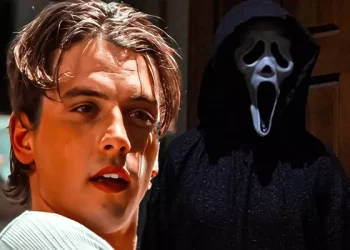The debate over whether the book or the movie adaptation is better has been a long-standing discussion among literature and film enthusiasts. In the case of “The Outsiders” by S.E. Hinton, many argue that the book surpasses the movie in several key aspects. This article delves into why the book version of “The Outsiders” is considered superior to its film adaptation, exploring themes, character depth, narrative intricacies, and the overall impact on readers and viewers alike.
1. Depth of Characters
One of the primary reasons why the book is often regarded as better than the movie is the depth of characterization present in the novel. S.E. Hinton intricately develops each character, providing readers with nuanced insights into their personalities, motivations, and inner struggles. From Ponyboy Curtis and Johnny Cade to Dallas Winston and Cherry Valance, every character in “The Outsiders” is portrayed with layers of complexity that contribute to the richness of the story.
In contrast, the movie adaptation, while commendable in its casting choices and performances, has limited screen time to fully explore the depth of each character. Certain nuances and character developments present in the book may be glossed over or omitted entirely in the film, resulting in a somewhat simplified portrayal of the characters and their relationships.
2. Emotional Impact
The immersive nature of reading allows readers to connect deeply with the emotions conveyed in the book. “The Outsiders” tackles themes of identity, friendship, loyalty, and societal expectations, evoking a range of emotions from empathy to heartbreak. Readers experience the story through the eyes of Ponyboy, experiencing his joys, fears, and conflicts in a profoundly personal way.
While films have the advantage of visual and auditory elements to evoke emotions, they may not always capture the internal monologues, thoughts, and emotions of characters as effectively as a book can. The book’s narrative style, including Ponyboy’s introspective reflections, contributes significantly to its emotional impact on readers.
3. Narrative Complexity
S.E. Hinton’s narrative structure in “The Outsiders” is another aspect that sets the book apart from its movie adaptation. The novel is written in first-person perspective, allowing readers to delve into Ponyboy’s mind and understand his perspective on the events unfolding around him. This narrative choice adds depth to the story, as readers navigate Ponyboy’s growth, struggles, and evolving understanding of the world.
In contrast, the movie adaptation, while visually engaging, may not capture the same level of narrative complexity present in the book. Certain narrative nuances, symbolism, and literary devices employed by Hinton may not translate seamlessly onto the screen, leading to a slightly different storytelling experience.
4. Themes and Social Commentary
“The Outsiders” is celebrated for its exploration of timeless themes and social issues that resonate with readers across generations. From the divide between social classes to the search for identity and belonging, the book delves into complex themes with nuance and sensitivity. S.E. Hinton’s portrayal of the greaser and soc dynamics, as well as the impact of violence and prejudice, offers readers profound insights into human nature and society.
While the movie adaptation captures some of these themes visually, the book allows for deeper exploration and contemplation of the underlying messages. Readers can engage with the text at their own pace, pondering the implications of the characters’ actions and the societal forces at play in the narrative.
5. Reader’s Imagination
One of the unique aspects of reading a book like “The Outsiders” is the role of the reader’s imagination in shaping the story. Each reader envisions the characters, settings, and events in their mind’s eye, creating a personalized and immersive experience. The book provides a canvas for readers to paint their own interpretations and emotional connections, fostering a sense of ownership over the story.
In contrast, a film adaptation presents a more concrete visual representation of the story, leaving less room for individual imagination and interpretation. While movies can bring stories to life in vivid detail, they also limit the viewer’s ability to imagine and visualize aspects of the narrative in their unique way.
Conclusion
In conclusion, “The Outsiders” by S.E. Hinton stands out as a literary masterpiece that offers a depth of character, emotional impact, narrative complexity, thematic richness, and reader engagement that surpasses its movie adaptation. While the film adaptation has its merits and brings the story to a wider audience, the book remains a cherished work that continues to captivate readers with its timeless themes and compelling storytelling.
Related topics:


























